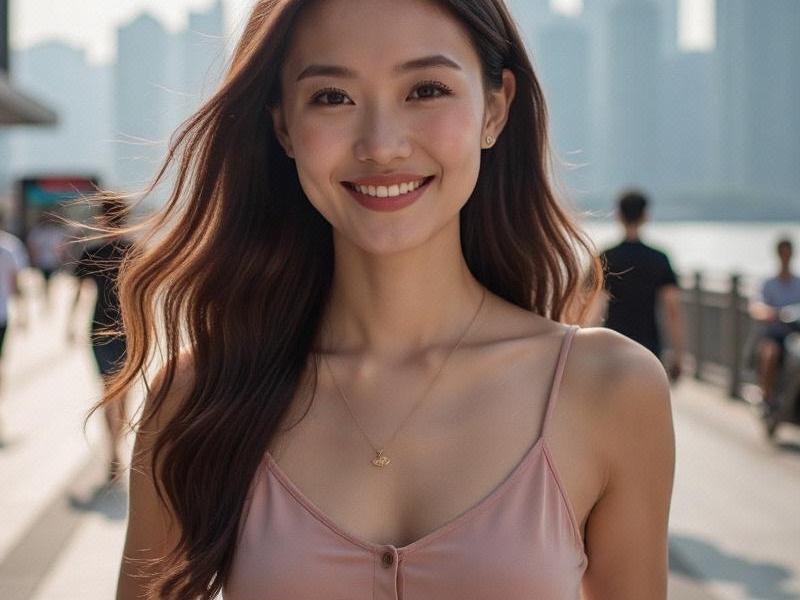This investigative report examines how Shanghai women have become cultural ambassadors who embody the city's blend of tradition and modernity, creating a unique feminine identity that influences China's social and economic landscape.

The Shanghai Aesthetic: More Than Meets the Eye
At 8:15 AM in Xintiandi, investment banker Zhao Yuxi adjusts her qipao-inspired power suit while reviewing stock forecasts on her smartphone—a perfect metaphor for how Shanghai women seamlessly merge cultural heritage with contemporary ambition. This distinctive fusion has made "Shanghai beauties" a cultural phenomenon that transcends physical appearance to represent urban China's evolving identity.
Historical Evolution of the Shanghai Woman
1. 1920s-1940s:
- "Modern Girls" of Republican era
- Qipao fashion revolution
- Early female entrepreneurs
2. 1950s-1970s:
- Mao suit uniformity period
- Industrial workforce participation
- Suppression of bourgeois aesthetics
3. 1980s-2000s:
- Fashion renaissance
- White-collar workforce emergence
- International influences
4. 2010s-Present:
- Hybrid cultural identity
- Leadership positions
- Globalized yet localized style
Statistical Profile (2025)
- 53% of Shanghai management roles held by women
- 68% higher fashion spending than national average
- 42% of tech startup founders female
- 7:1 ratio of female to male luxury consumers
- 89% university enrollment rate (female)
上海龙凤阿拉后花园 Cultural Archetypes
1. The "Steel Rose" Executive:
- Bilingual business leaders
- Traditional values, modern methods
- Case: Pudong finance directors
2. The Cultural Custodian:
- Heritage fashion designers
- Art gallery curators
- Case: Tianzifang boutique owners
3. The Innovation Catalyst:
- Tech entrepreneurs
- Social media influencers
- Case: Zhangjiang AI founders
Economic Impact
1. Beauty Economy:
- ¥82 billion market value
- 3,200 beauty tech companies
- Global cosmetic R&D centers
2. Fashion Industry:
- Shanghai Fashion Week growth
- Local designer incubators
- Sustainable fashion movements
3. Professional Services:
- Women-led law firms
- Financial consultancies
- Education enterprises
上海花千坊龙凤
Social Transformation Drivers
1. Education:
- Bilingual schooling
- Study abroad programs
- Executive education boom
2. Workplace Evolution:
- Flexible work arrangements
- Anti-discrimination policies
- Leadership pipelines
3. Cultural Permissiveness:
- Later marriage acceptance
- Singlehood normalization
- Diverse lifestyle options
Global Influence
1. Fashion Trends:
- "New Shanghai Style" collections
- International brand collaborations
- Street style photography hubs
2. Media Representation:
- TV drama archetypes
- Literary characters
- Social media personas
3. Diplomatic Roles:
- Cultural ambassadors
- Business negotiators
上海龙凤419 - NGO leaders
Challenges and Controversies
1. Aging Population:
- Beauty standards evolution
- Mature workforce integration
- Intergenerational dynamics
2. Work-Life Balance:
- Childcare solutions
- Elder care responsibilities
- Personal time management
3. Commercial Pressures:
- Cosmetic surgery trends
- Youth obsession
- Sustainability conflicts
Future Trajectories
1. Technological Integration:
- Beauty tech innovations
- Digital identity curation
- AI personal styling
2. Cultural Leadership:
- Global soft power
- Creative industry expansion
- Heritage preservation
As sociologist Dr. Liang Wei comments: "The Shanghai woman has become the ultimate expression of China's urban transformation—simultaneously rooted and cosmopolitan, ambitious and graceful, traditional and revolutionary. They don't just reflect social change; they actively shape it through everyday choices that collectively redefine Chinese femininity."
This ongoing evolution positions Shanghai women as key actors in China's next development phase, embodying the complex negotiations between global influences and local values that characterize 21st century urban Asia.